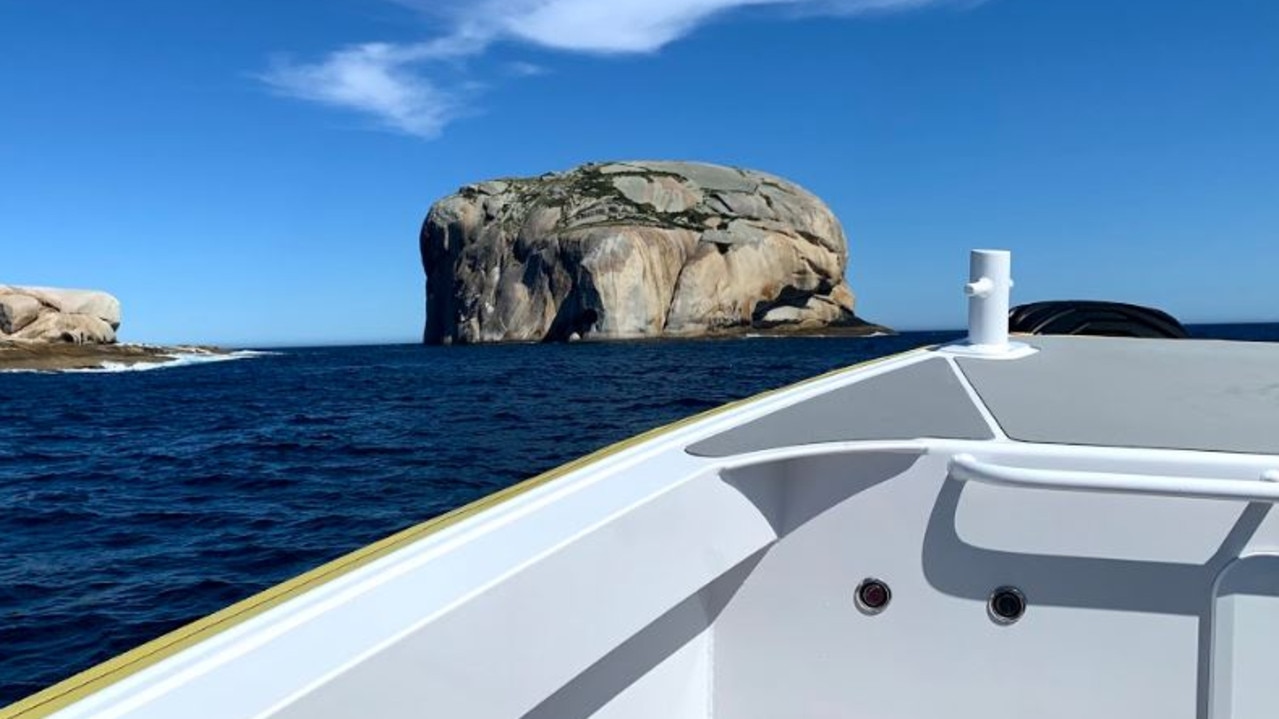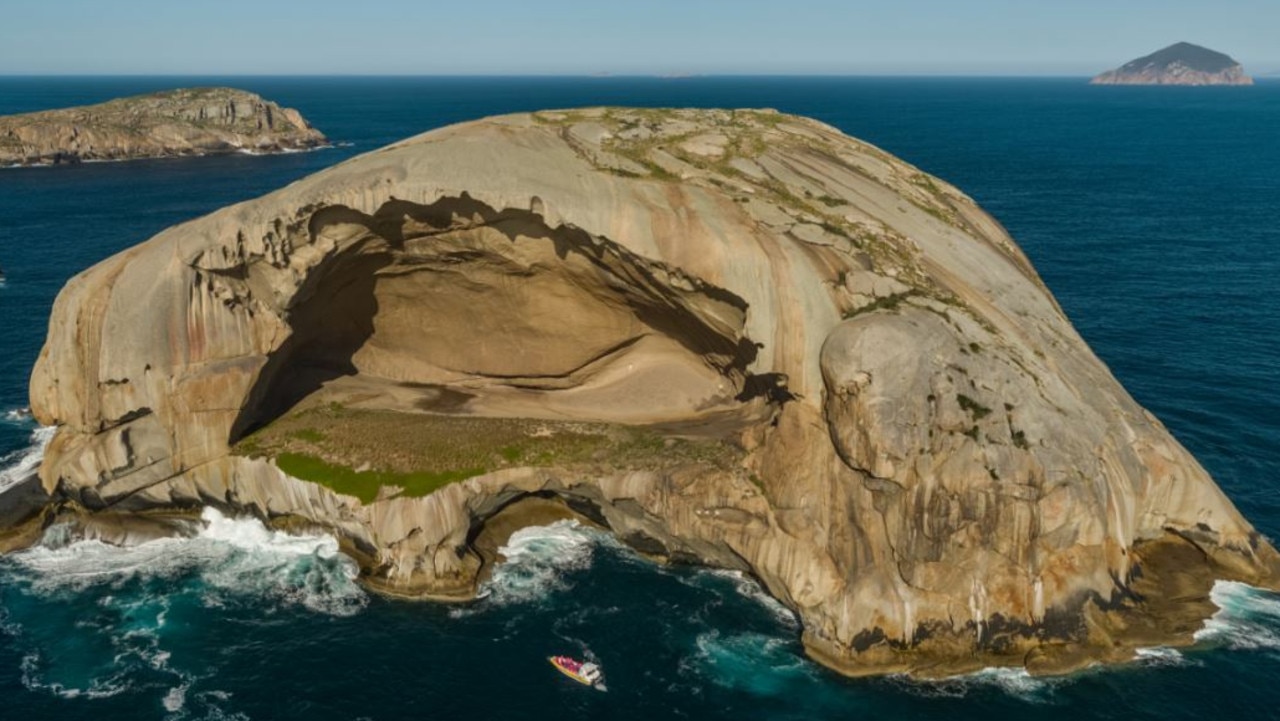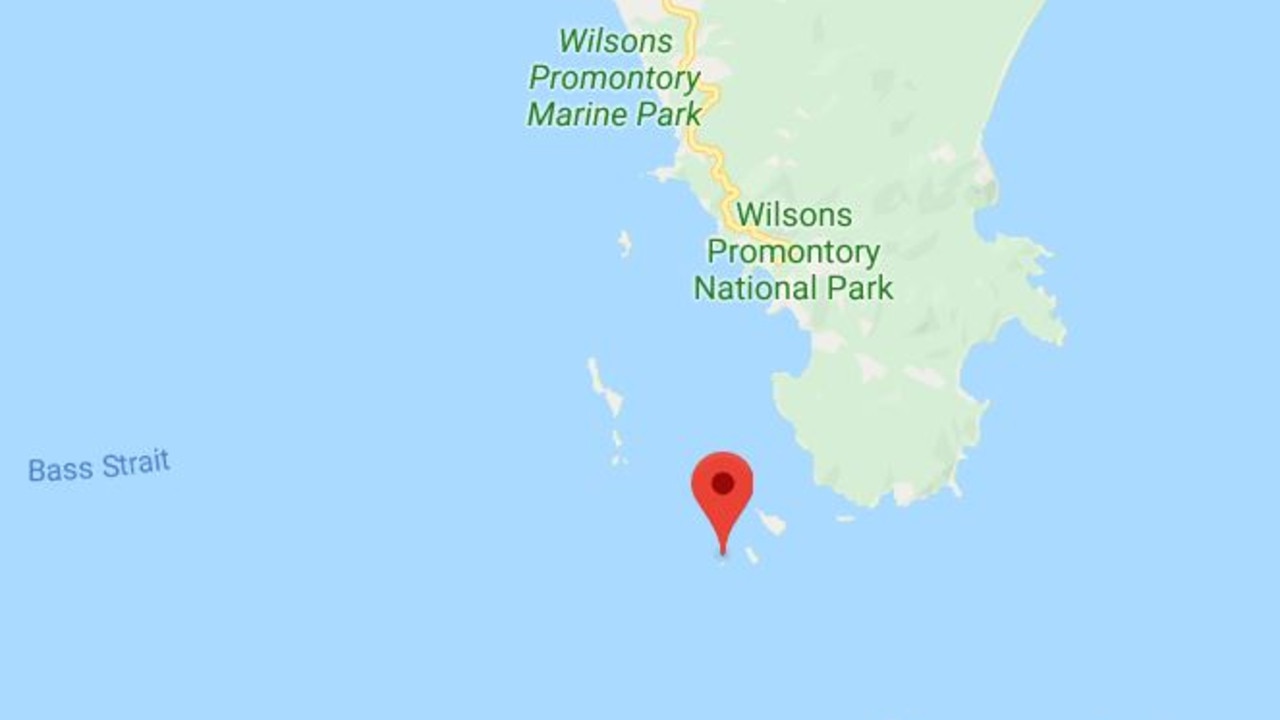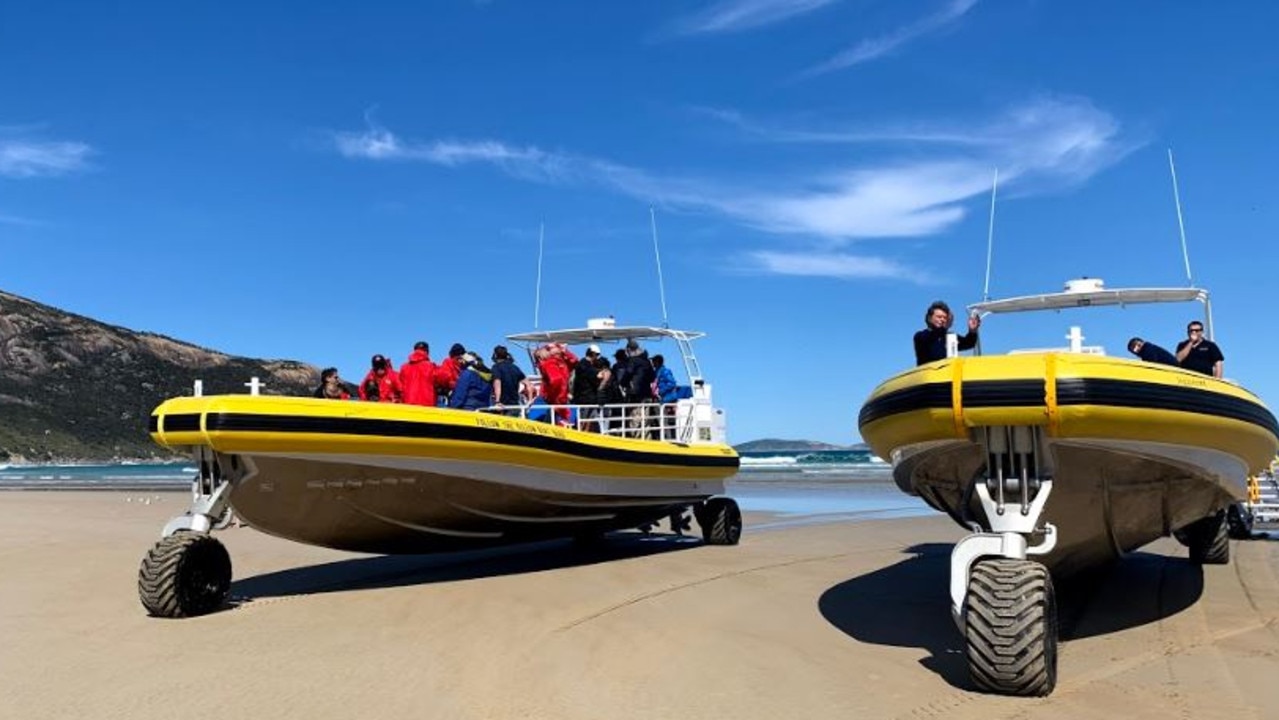Skull Rock: The Australian island which has had less visitors than the moon
Sitting a stone’s throw off the rugged Victorian coastline, this mysterious island protected by thousands of fur seals has been a hidden secret — until now.

Surrounded by azure blue waters and protected by thousands of barking fur seals, a mysterious and untouched island sits undisturbed off the rugged coast of Victoria’s Wilsons Promontory.
Hiding on the edge of the Bass Strait, just three hours south of Melbourne’s CBD, the unassuming mound of granite grows in size with each grunt of V8 horse power as our boat with wheels skims over waves towards its stony face.
Gaping wide open and exposing a burst of greenery on one side of the island, ‘Skull Rock’ balloons over our bright yellow vessel as we venture closer and closer.


As some of the first people to get up close and personal with the mysterious mountain of rock, we marvel at the huge cave that engulfs half of the island and is home to a family of skinks who are as the only residents living on the ‘skull’.
Having less visitors than the moon itself (according to the locals), the island has been carved out over centuries to create its unique “skull like” formation.
Surrounded by the temperamental waters of the Bass Strait, the sheer magnitude of the island and rugged facade makes for a spectacular first impression.

The formation is one of the most picturesque of all islands in Wilsons Promontory, however until now Skull Rock has only been visible from the beaches 5km away.
Having just nine recorded visitors successfully scale the island — and making it off alive — the practically inaccessible western side of the island presents the biggest appeal.
Showcasing a gigantic cave with a grassy floor, the mouth of the island was carved by waves when the sea levels were much higher thousands of years ago.


Spanning 130 meters wide, 60 meters high and 60 meters deep, our guide — Rob Pennicott — says the rock is so big it could engulf the Sydney Opera House.
From certain angles, the island looks like a skull which is why the nickname was developed.
Little is known about the island, however, the cave was once thought to be used as target practice by passing ships. One of the few people to have set foot on the island, because of the lack of safe sites to anchor any vessels, reportedly discovered cannon balls inside the cave.
Until now, the mystery of Skull Rock — and venturing anywhere near the granite mountain — has posed as a challenge to anyone visiting ‘The Prom’ National Park.

In 1853, the rock was proposed as one of the sites for a lighthouse, but that idea was quickly squashed when the sheer terrain of getting on the island proved to be far too difficult and it was built on the mainland instead.
Surrounding the island and underneath the blanket of blue water, several ships sit wrecked on the seabed.
The Kanowna, once a hospital ship for wounded soldiers from Gallipoli, sank off Wilsons Promontory after striking Skull Rock in 1929. The wreck was found by a team of divers on Anzac weekend 2006. Survivors of the crash, according to reports, remember an almighty crash and the ship shuddering from end to end, then lurching.
By 10pm the 141 passengers had abandoned ship, to be picked up by the nearby SS Mackarra.

But from Monday, visitors to the area will have the opportunity to get closer than even before to the relatively undiscovered family of islands.
Eight years in the making, the amphibious boats used by Pennicott Wilderness Journeys are a world first in size, design and manoeuvrability.
The custom made boats, which are bright yellow in colour, are designed with a minimum environmental impact that drives over the sand before bouncing over the waves crashing on to Norman Beach and in to the ocean.

The monolith that is Skull Rock is just one of the uncharted islands visitors on board this world first tour in the region will witness, with the boats snaking around the rugged coastline stopping at The Glennies, Anderson Islets, South Point (the southernmost tip of mainland Australia) as well as explore the prehistoric boulders of Mount Oberon.
Along with natural formations, the standout of the tour is the amount of wildlife that lives in the waters of Wilsons Promontory Marine National Park, including thousands of Australian fur seals, pods of dolphins and even a Humpback whales during their migration season.
You can check out how to book your $135 trip out to the mysterious Skull Rock through www.promcruises.com.au
This writer went to Skull Rock as a guest of Visit Melbourne.




